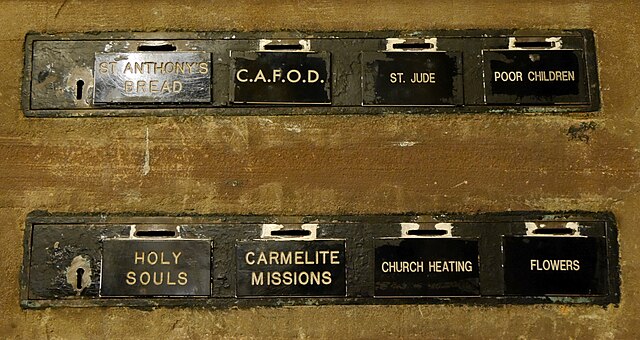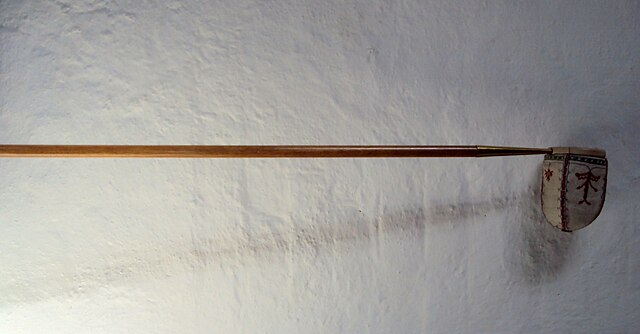The offertory is the part of a Eucharistic service when the bread and wine for use in the service are ceremonially placed on the altar.
Collection boxes, Our Lady of Mount Carmel and St Simon Stock, Kensington, London
Collection bag used in Church of Sweden
Kollektomat (collectomat), an automatic offertory machine with a card reader in Lund Cathedral, Sweden
Anglican Church of Korea's Offering bags
The Eucharist, also known as Holy Communion, Blessed Sacrament and the Lord's Supper, is a Christian rite that is considered a sacrament in most churches, and as an ordinance in others. Christians believe that the rite was instituted by Jesus at the Last Supper, the night before his crucifixion, giving his disciples bread and wine. Passages in the New Testament state that he commanded them to "do this in memory of me" while referring to the bread as "my body" and the cup of wine as "the blood of my covenant, which is poured out for many". According to the Synoptic Gospels this was at a Passover meal.
The Eucharist has been a key theme in the depictions of the Last Supper in Christian art, as in this 16th-century Juan de Juanes painting, after Leonardo da Vinci's Last Supper.
A Kremikovtsi Monastery fresco (15th century) depicting the Last Supper celebrated by Jesus and his disciples. The early Christians too would have celebrated this meal to commemorate Jesus' death and subsequent resurrection.
Eucharistic window (1898–1900) by Józef Mehoffer
Christ with the Eucharist, Vicente Juan Masip, 16th century.








